Kill Bill: Volume 1 (2003)
Directed by: Quentin Tarantino
Written by: Quentin Tarantino
Starring: Lucy Lui, Michael Madsen, Uma Thurman, Vivica A.Fox
HCF REWIND NO. 139: KILL BILL: VOLUME 1 [2003]
AVAILABLE ON DVD AND BLU-RAY
RUNNING TIME: 111 min
REVIEWED BY: Dr Lenera, Official HCF Critic
A woman called ‘The Bride’ kills another woman called Vernita Green in her house and ticks her off a list. The Bride was once a member of the Deadly Viper Assassination Squad, elite assassins under the employ of Bill. Flashing back, she lies badly wounded at her wedding, telling Bill that she is carrying his baby as Bill shoots her in the head. She miraculously survives the headshot, but is left comatose for four years. When she wakes up, she not only finds she is no longer pregnant but has been repeatedly raped by hospital worker Buck and others from whom Buck has been excepting cash. She kills both her latest rapist-to-be and Buck, then steals his truck and sets off for revenge against the other Deadly Vipers…..
I always remember Kill Bill: Volume 1 as the last Quentin Tarantino film I both really enjoyed and felt was really good until Django Unchained surprised me. I’ve written elsewhere on this site about what I feel is Tarantino’s decline, though some of what I wrote became dated when his western burst onto the screen. The old Tarantino was back. Revisiting Kill Bill: Volume 1 [and I know it and Kill Bill: Volume 2 were originally intended to be one movie, but they are actually quite different] after quite a while, the film has lost some of its lustre. It’s still at times a wildly entertaining ride where you can virtually feel Tarantino desperately trying to get as much as he can onto the screen. Though chiefly inspired by Asian martial arts movies from Japanese swordplay flicks to Chinese wuxia films, it also borrows from other sources from spaghetti westerns to revenge flicks, while directorially it incorporates virtually every technique you can think of. This most packed and crazy of Tarantino’s mosaics of influences and steals [something Tarantino always admits] from the immense range of films he loves is so full that there’s less room than usual for Tarantino’s own quirks, and thereby lie both the problems and the assets of this movie in the director’s ouvre.
Kill Bill was born as a result of a conversation between Tarantino and Uma Thurman during the making of Pulp Fiction, though it then took Tarantino six years to write his script, which initially came in at a whopping 220 pages long. Thurman was probably always going to play The Bride, but Warren Beatty and Kevin Costner were asked to play Bill before Beatty recommended David Carradine. Tarantino not only used many Asian faces ranging from legends like Sonny Chiba and Gordon Liu to newer stars like Chiaki Kuriyama and Lucy Liu, but even shot some of the film at the legendary Shaw Brothers Studios, the primary source for Hong Kong martial arts films during the 70’s, and with a mainly Chinese crew. He also used a Tokyo miniature set from the latest Godzilla film Godzilla, Mothra and King Ghidorah: Giant Monsters All-Out Attack. The script went through much alteration with Gogo, for example, originally two characters and Johnny Mo supposed to walk around with a Kato mask on a stick, while new bits were constantly added. The music was all taken from Tarantino’s record collection. It’s unclear when exactly during filming the film was split in two. This first part was Tarantino’s biggest hit yet, but the MPAA objected to the gore in the climactic battle so Tarantino changed a section of it to be in black and white, though a few instances of extreme violence were still cut. Many fans imported the Japanese version on DVD, which is uncut, in colour, and in my view the version to see.
Now right away you can see that this is Tarantino’s wildest movie in terms of direction, with lurid filters, whip pans, elaborate crane shots, slow motion, the most stunning of Tarantino’s single takes, and probably every single device you can think of. There’s even a shot taken through underneath a glass floor of somebody walking as in Hitchcock’s The Lodger [though Tarantino was probably more referencing Tokyo Drifter]. Meanwhile the basic template including even its chapter headings [which in themselves sometimes reference films] is Lady Snowblood [with maybe a little bit of The Bride Wore Black in there too], while The Bride carries out much of her revenge in Bruce Lee’s Game Of Death tracksuit, Chiba plays a descendant of a real-life character who he played in a Japanese TV series and says lines from another, Gogo has a ball and chain just like the heroine of Sukeban Deka and cries tears of blood as in City Of The Living Dead, an orange sunset sky behind a plane evokes a shot from Goke: Body Snatcher From Hell, Buck quotes a line from Death Trap, and so it goes on. While this picture is enjoyable enough is you don’t pick up on this stuff or know about it, it’s probably more fun if a viewer does…well, in some ways. As I like much of the stuff that Tarantino likes, I enjoy all the ‘spotting’, but it also takes me out of the film rather too much, which sometimes struggles to have its own identity, Tarantino more showing what cool movies he likes than anything else.
Still, the opening bits are amongst his best. After a really harrowing scene of the heroine horribly bruised and battered and then being shot by an unseen Bill, we launch into a great sequence of The Bride trying to kill her next target, who happens to have a young daughter coming home from school. An insanely brutal but still athletic fight where the combatants really look like they are getting hurt is interrupted by the arrival of the little girl and the fighters making a cup of tea. This is Tarantino firing on all cylinders; there’s simmering tension, very black humour, interesting dialogue and bursts of shocking yet somewhat ironic brutality. This whole bit actually takes place after the events of the rest of the film, and Tarantino has said that you could shift the chapters around in various ways. Then we see how The Bride survived being shot in the first scene. Having her apparently repeatedly raped whilst in a coma feels like one gratuitously unpleasant touch too much, while for what is supposedly more than anything else a martial arts movie, we don’t get any more fighting till the final half an hour. The few really Tarantino-esque bits, especially the section where The Bride visits Chiba’s swordmaker, go on for too long considering Tarantino’s dialogue is generally less entertaining and quotable than in stuff like Pulp Fiction.
The marking of time before the climactic bloodletting does give us one amazing section [inspired by an Indian film Aalavandhan], when we are told about how O-Ren Ishii, The Bride’s main target, came to be. Done with animation, the nature of which is actually a little crude but somehow appropriate, the graphically bloody anime-inspired section is totally startling and truly disturbing, with the image of a young girl hiding under a bed having her dead mother’s blood drip onto her perhaps the most upsetting image Tarantino has yet put on screen. And the film’s final half hour remains a brilliant ballet of bodies, movement and lots and lots of the red stuff. Tarantino builds and builds up to the fighting, really playing with the audience, than lets rip. Masterfully edited in a manner which is midway between the ‘plonk the camera on the ground and run it’ method of old kung fu films and the faster cutting which has become excessive of late in cinema, and alternating from elaborate wirework to the more realistic kind of fighting, it’s breathtaking stuff, and cleverly makes each section different in various ways. And then the film stops….but of course we all couldn’t wait to see the second part, could we?
I’m no fan of Tarantino’s use of music, partly because, being a soundtrack fan, I tend to recognise too much and lose focus on the film. The music choices here, some, but not all, from other films, are the most diverse in style Tarantino has ever used and do usually go very well with the images. The very ‘easy-listening’ tune, replete with pan-flute, of The Lonely Shepherd by James Last, gives the making of Hanzo’s sword a certain exquisite beauty, while the instrumental portions of Santa Esmerelda’s song Don’t Let Me Be Misunderstood enhance the suspense of the final face-off. Kill Bill: Volume 1 probably shows its creator’s love of cinema more than any other of his films. This limits as well as enhances the movie, but I think you would have to be a real Tarantino hater to find it, at times, quite exhilarating. And it also shows he’s absolutely superb at staging full-on action, especially kick-ass fight sequences. I hope he will one day make the traditional-style martial arts film he used to mention at times.
Rating: 










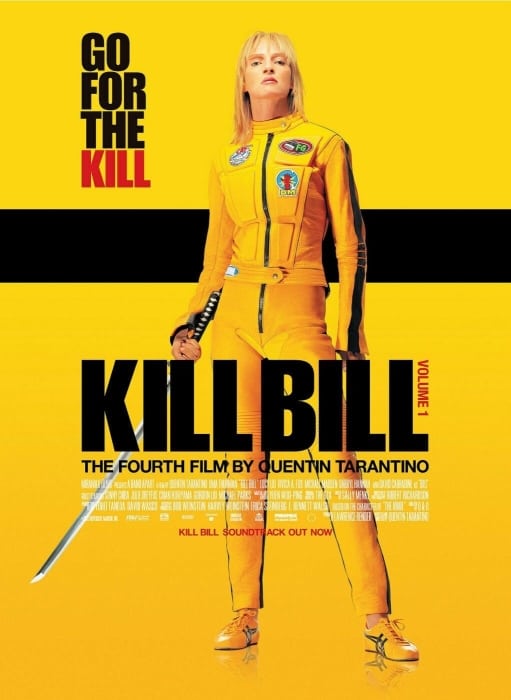
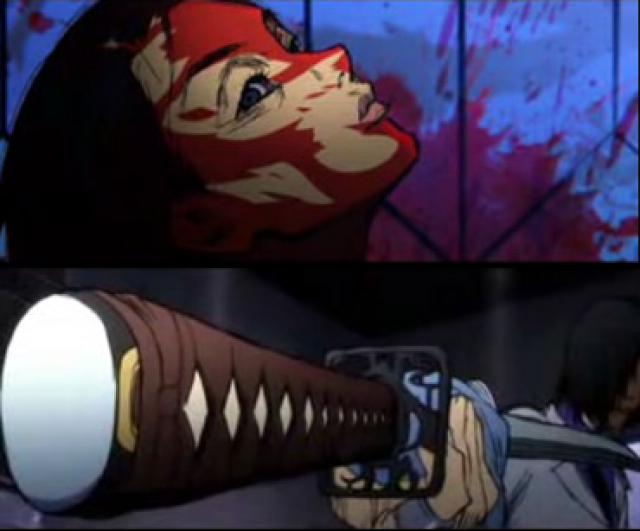
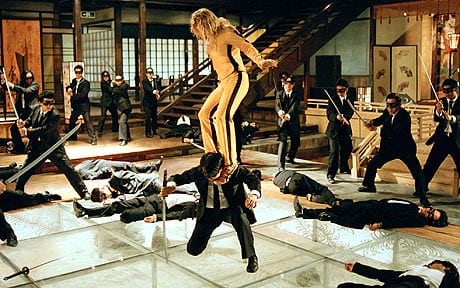


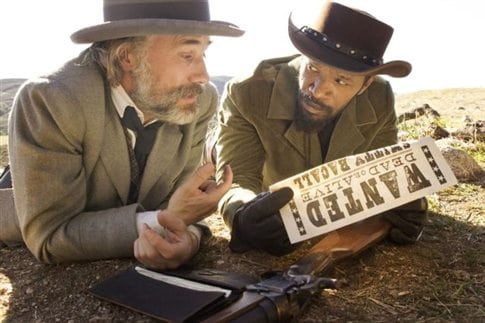
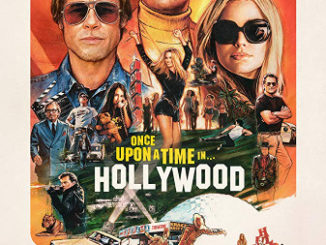
Be the first to comment